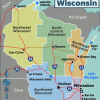ATTOM, a curator of land, property, and real estate data, released its first-quarter 2023 U.S. Home Affordability Report showing that median-priced single-family homes and condos are less affordable in the first quarter of 2023 compared to historical averages in 94 percent of counties across the nation with enough data to analyze – far above the 62 percent of counties that were historically less affordable in the first quarter of 2022.
However, the report also shows that buying conditions for house hunters may improve as the portion of average wages nationwide required for typical major home-ownership expenses has fallen slightly to 30 percent this quarter.
Common lending standards still consider the latest percentage unaffordable, which call for a 28 percent debt-to-income ratio. It also remains well above the 25 percent level in the first quarter of 2022. But the portion has inched downward from 31 percent in the final months of last year.
The mixed picture facing home buyers – prices that remain a financial stretch but are getting a bit more affordable – reflects a softening of the U.S. housing market combined with rising wages at a time when home mortgage rates have stabilized following a year of increases.
The nationwide median single-family home and condo price is up less than 1 percent from the fourth quarter of 2022 to the first quarter of 2023 – now sitting at $320,000 – while three quarters of local markets continue to see prices slip this year. Those trends have followed an 8 percent decrease in the nationwide median during the second half of 2022. The drop-off has come as rising interest rates, high consumer-price inflation and stock market declines have cut into what home seekers can afford or their resources for down payments.
At the same time, wages have risen 6 percent nationwide over the past year, with increases continuing into the second half of 2022 in most of country.
“The soaring housing market has finally come back down in much of the U.S., at least for now, while worker pay is growing. That’s produced some benefits for home seekers in the form of slightly better affordability, especially as lending rates have flattened out,” said Rob Barber, chief executive office for ATTOM. “Things certainly haven’t swung way back into friendly territory. Price drops and wage gains haven’t yet translated into equal improvements in affordability. And the trend could go back the other way if interest rates go up again, as expected. But the scenario is becoming more favorable for buyers.”
With multiple uncertain economic forces at work, the market could continue sliding or turn back upward this Spring and Summer. That, along with the path of wages, will dictate whether home ownership continues to grow more affordable after a gradual path the other way over the past few years.
ATTOM’s latest report determined affordability for average wage earners by calculating the amount of income needed to meet major monthly home ownership expenses — including mortgage, property taxes and insurance — on a median-priced single-family home and condo, assuming a 20 percent down payment and a 28 percent maximum “front-end” debt-to-income ratio. That required income was then compared to annualized average weekly wage data from the Bureau of Labor Statistics (see full methodology below).
Compared to historical levels, median home prices in 537 of the 572 counties analyzed in the first quarter of 2023 are less affordable than in the past. The latest number is down from 565 of the same group of counties in the fourth quarter of 2022. But it remains far more than 356 in the first quarter of 2022 and just 91, or less than one-fifth, that were less affordable historically two years ago.
Meanwhile, major home-ownership expenses on typical homes are considered unaffordable to average local wage earners during the first quarter of 2023 in 373, or about two-thirds, of the 572 counties in the report, based on the 28 percent guideline. Counties with the largest populations that are unaffordable in the first quarter are Los Angeles County, CA; Maricopa County (Phoenix), AZ; San Diego County, CA; Orange County, CA (outside Los Angeles) and Kings County (Brooklyn), NY.
The most populous of the 199 counties where major expenses on median-priced homes remain affordable for average local workers in the first quarter of 2023 are Cook County (Chicago), IL; Harris County (Houston), TX; Wayne County (Detroit), MI; Philadelphia County, PA, and Franklin County (Columbus), OH.
Click here to read the full report from ATTOM, including the Q1 2023 Home Affordability Heat Map.















